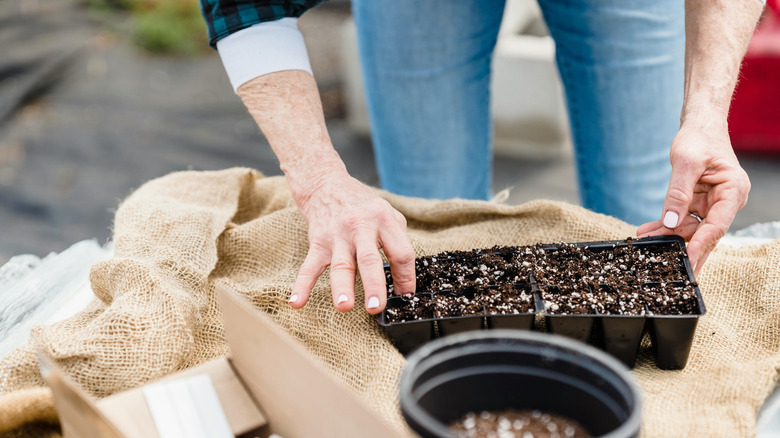Can Loofah Sponges Really Replace Plastic Seed Trays?
If you care about the environment as a gardener, you've likely looked into ways to cultivate more sustainable gardening practices. Growing your own food is a valuable resource for saving money along with protecting the environment. Single-use plastic seed trays are convenient, and many gardeners use them to get their seeds germinated. However, these plastic trays are incredibly harmful to use, as they cannot decompose and contribute to ocean damage with their accumulation. Luckily, there's an excellent alternative that's biodegradable, and you can also grow them — the loofah (luffa) sponge! These are the perfect replacement for plastic seed trays for sustainable gardening.
Sustainable gardens help reduce chemical and water usage. They also ensure that you don't create more garbage when you utilize leftovers and scraps for composting. Such scraps may include organic loofah sponges. Most people use loofah sponges as exfoliators with their body wash during showers, and some have discovered other benefits, such as using this cheap and effective bath item to clean the shower. However, you can also use dried sponges as seed trays to get your sustainable garden started rather than relying on those unhealthy plastic trays.
Using organic loofah sponges as seed trays
You must start with organic loofah sponges, not the kind you purchase in a store that have been dyed and are synthetic. You can grow them yourself in your garden to create the sponges you need to make multiple seed trays. Luffa aegyptiaca, or Luffa acutangula, are the botanical names for loofahs. They grow well in USDA zone 6 when started indoors and 7 or higher can be started outdoors. A good amount of sun and moisture is needed for healthy gourds. To make the sponges, you leave the gourd on the plant until it turns yellow and starts withering. You can shake out the seeds and let the gourds dry out to achieve the spongy consistency.
To make the seed trays, simply use strong scissors to cut the sponges into small "pots". You can cut the center of the pot out (not all the way down) as well. Add your compost or soil next, pressing it down gently or shaking it into the holes of the sponges. Then, press your seeds into the soil with a pencil. If you want to hold up the sponges because they don't stand well on their own, you can use an egg carton or tray and put soil around it to keep the sponges in place. That's all there is to it! Your seed trays are now ready, so you can grow whatever you want to keep in the yard or your sustainable garden.
